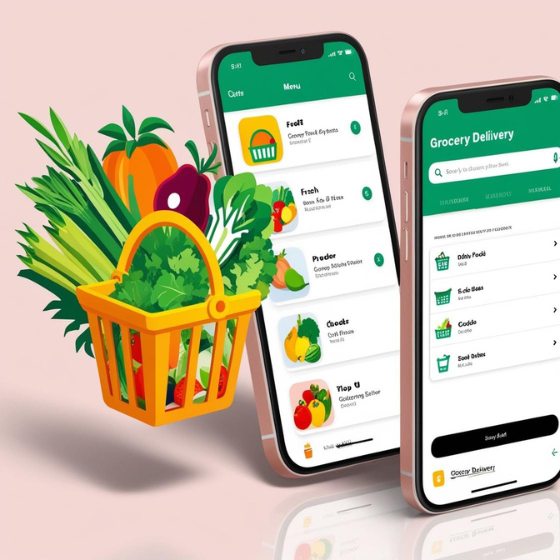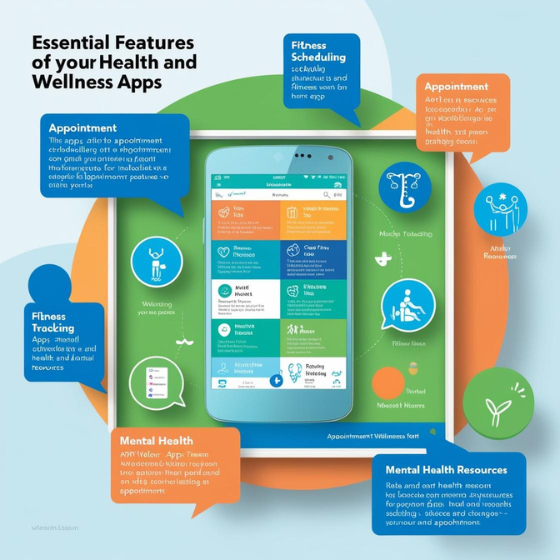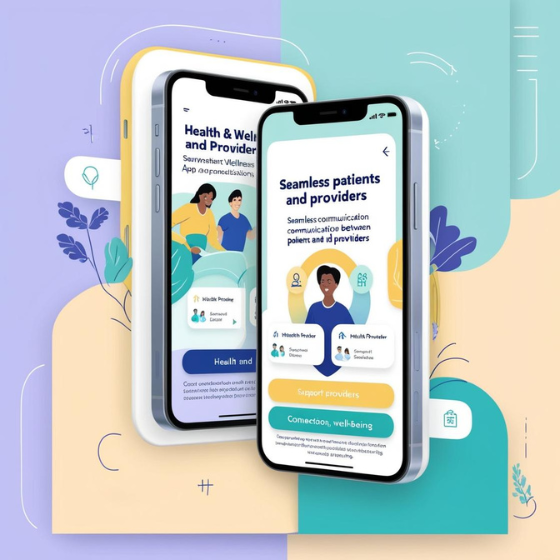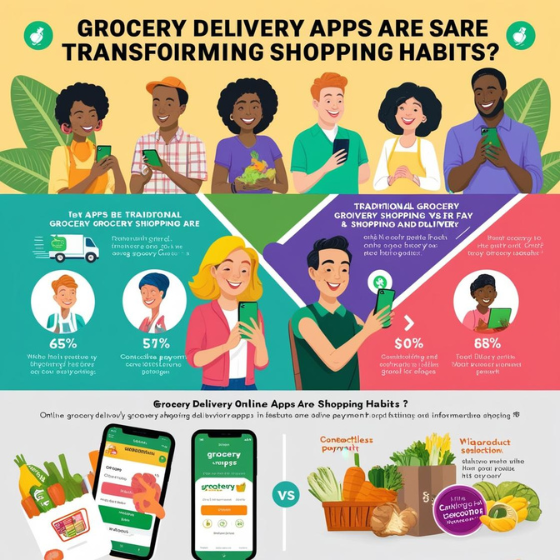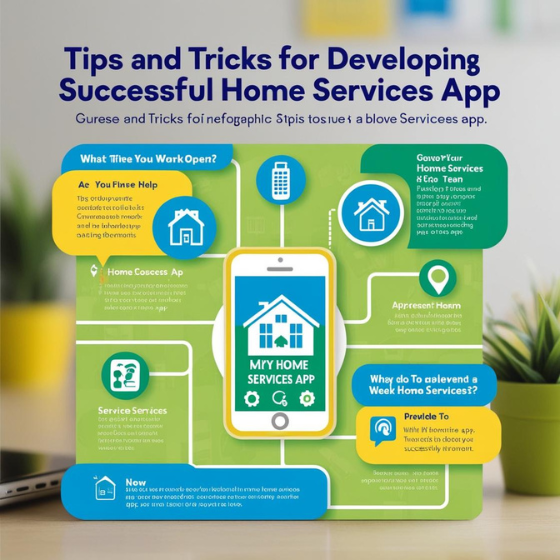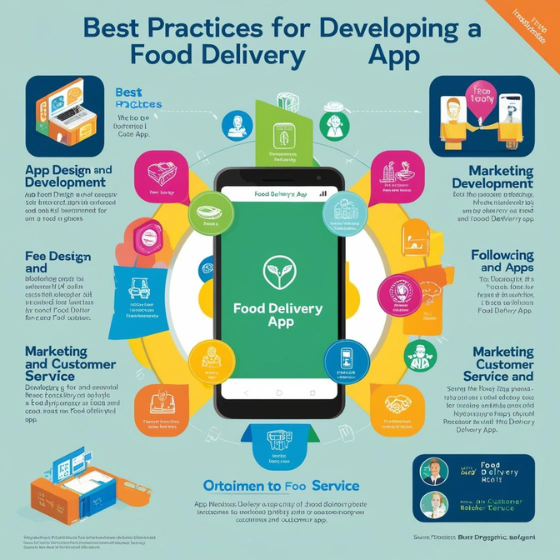Introduction: The Surge in Demand for Grocery Delivery Apps
Did you know that the global grocery delivery market is expected to reach $250 billion by 2025? With more consumers relying on the convenience of shopping from their smartphones, grocery delivery apps have become a vital part of the modern retail landscape. In fact, the demand for building a user-friendly grocery delivery app is higher than ever, as consumers look for quick, efficient, and seamless ways to get their groceries delivered.
This blog will explore the key steps to building a user-friendly grocery delivery app that not only attracts users but also keeps them coming back. We’ll dive into essential features, design best practices, and tips for ensuring an exceptional user experience. Whether you’re a business owner looking to enter the market or an app developer aiming to improve existing platforms, this guide will provide you with valuable insights.
1. Understanding the Core Features of a Grocery Delivery App
When it comes to building a user-friendly grocery delivery app, understanding the core features that customers value most is essential. These features must be designed with the user in mind, ensuring a smooth and efficient shopping experience from start to finish.
Key Features to Include:
- User Registration & Profile Management: Allow users to easily create and manage their profiles with options to save their addresses, payment methods, and order history.
- Product Catalog & Search Functionality: A well-organized catalog with robust search filters is crucial for users to quickly find the products they need. Categories, sorting, and search bars should be easily accessible.
- Shopping Cart & Checkout Process: Ensure a seamless process for adding products to the cart and checking out. Users should be able to review their orders, adjust quantities, and apply discount codes effortlessly.
- Order Tracking: Provide real-time tracking of the delivery process, so users can monitor the status of their orders from the moment they place them until delivery.
- Payment Integration: Integrate secure and widely accepted payment options, such as credit/debit cards, mobile wallets, and other payment methods popular in the region.
At Sodio, we specialize in building user-friendly grocery delivery apps with these features and more, ensuring both functionality and ease of use for your customers.
2. Designing a Seamless User Interface (UI)
A well-designed interface is at the heart of any successful app, especially when building a user-friendly grocery delivery app. The goal is to create an app that is intuitive, clean, and easy to navigate.
Design Tips for a Seamless UI:
- Simple Navigation: Use a minimalistic approach to navigation, with clear categories and easy-to-read icons. Users should never feel overwhelmed by complex menus.
- Fast Loading Times: Users expect apps to be quick. Optimize images, content, and functions to load swiftly, ensuring a fast and smooth experience.
- Consistent Branding: Maintain consistency in colors, fonts, and layout to make your app easily recognizable and professional.
- Easy-to-Read Text: Ensure text is legible by using appropriate font sizes and contrast against background colors.
- Mobile Optimization: Since grocery delivery apps are primarily used on smartphones, ensure the app is fully optimized for mobile devices with responsive design.
With a strong focus on user-friendly UI design, your app will attract users, increase engagement, and improve retention. Building a user-friendly grocery delivery app means putting the customer’s needs first, ensuring they can use the app with ease, no matter their tech-savviness.
3. Building Trust with Reliable Delivery and Customer Support
Trust is a key component of the grocery delivery experience. Building a user-friendly grocery delivery app means ensuring that users can rely on you for timely deliveries and responsive customer support. Addressing customer concerns promptly and ensuring the accuracy of their orders can significantly boost customer loyalty.
Key Trust-Building Features:
- Order Confirmation & Notifications: After placing an order, send confirmation emails and app notifications with delivery details. Keep customers informed about any changes or delays.
- Real-Time Tracking: Provide real-time updates on the status of the delivery so that customers can track their order’s progress and know when to expect it.
- Customer Support Integration: Include an easily accessible customer support feature, such as live chat, FAQs, or a phone number for assistance. Customers should always have a way to reach you with any questions or issues.
- Ratings & Reviews: Encourage users to rate their delivery experience and leave feedback. Displaying positive reviews builds credibility and trust with new users.
By integrating reliable customer support and transparent order tracking, you’ll strengthen your app’s reputation and ensure long-term success. Building a user-friendly grocery delivery app means establishing trust and delivering on promises consistently.
4. Implementing Smart Features to Improve User Experience
To truly stand out in the competitive grocery delivery market, your app should include innovative features that make the experience more convenient, efficient, and enjoyable for users.
Smart Features to Consider:
- Personalized Recommendations: Using AI and machine learning, recommend products based on a user’s shopping history and preferences. Personalization helps increase sales and makes shopping more enjoyable for customers.
- Subscription Services: Offer users the option to subscribe to regular deliveries of commonly purchased items, such as groceries, dairy, and essentials. This encourages repeat business and fosters customer loyalty.
- Voice Search: Incorporate voice search functionality so users can easily find products without typing. This is especially useful for users on the go or with disabilities.
- Loyalty Programs: Offer rewards or discounts for repeat customers. Implementing a loyalty program can help retain customers and increase app usage.
By adding these smart features, building a user-friendly grocery delivery app becomes a process of anticipating user needs and offering solutions that make their shopping experience more enjoyable and efficient.
5. Testing, Feedback, and Continuous Improvement
Once your app is built, the next crucial step in the process is testing, feedback, and continuous improvement. Even the most user-friendly grocery delivery apps require updates and enhancements based on user feedback and behavior.
Steps for Ongoing Improvement:
- Beta Testing: Conduct thorough beta testing with a select group of users to identify potential issues, bugs, or areas for improvement.
- User Feedback: Encourage users to provide feedback through in-app surveys or reviews. Pay attention to their concerns and suggestions.
- Analytics: Monitor app usage data to identify pain points or features that are underperforming. Use these insights to optimize the app for better user experiences.
- Updates and Bug Fixes: Regularly update the app to fix bugs, introduce new features, and keep the interface fresh.
Remember, building a user-friendly grocery delivery app is not a one-time task. It’s an ongoing process that requires attention to detail, adaptability, and a commitment to continuous improvement.
Conclusion: The Future of Grocery Delivery Apps
In conclusion, building a user-friendly grocery delivery app is an essential step for businesses looking to capitalize on the growing demand for convenience and accessibility in the grocery shopping experience. By focusing on key features like easy navigation, trust-building customer service, innovative features, and continuous improvement, you can create an app that not only attracts users but keeps them coming back.
The grocery delivery app market is competitive, and standing out requires delivering an exceptional user experience. As the demand for online grocery shopping continues to grow, businesses that prioritize user-friendly design and convenience will be well-positioned to succeed.
If you’re ready to take your grocery delivery business to the next level, Sodio can help you build a user-friendly grocery delivery app tailored to your specific needs. Our experienced team will work with you to design and develop an app that enhances customer satisfaction and drives business growth.
Want to start building your app today? Reach out to Sodio and let’s create the future of grocery shopping together.
